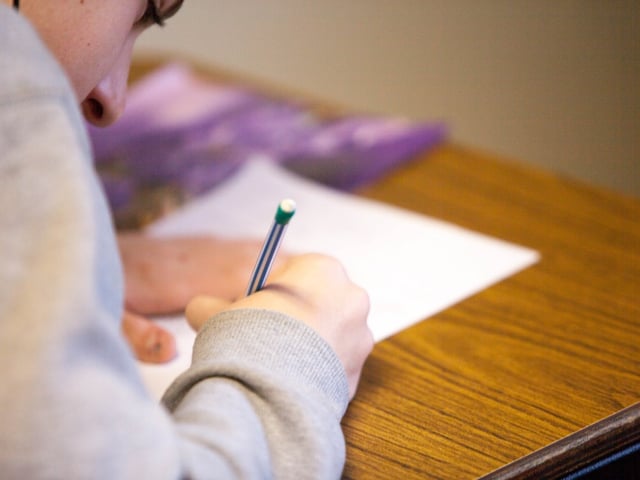
Engaging with a Text
Reading can be a fantastic way to escape from reality. Getting lost in a text can distract you from whatever reality surrounds you. This is great, except when you’re taking an exam or completing an assignment and have to read passages to answer specific questions. That’s no time to let your mind and imagination wander. How do you engage with a text and focus on it so you can score well on an exam like the ACT®? Here are some tips.
Be an Active Reader
Reading actively means doing more than passively moving your eyes across the page or screen. It means taking notes in the margin, marking up the text, and circling or underlining things that catch your attention. If reading from a screen, you may need to use the given scratch paper or board to jot down these notes. Just write quick notes and forget complete sentences. These notes are for you. You can develop a sort of shorthand to use, such as TS for “topic sentence” and E1 for “evidence point 1.”
Look for Specific Types of Things
The ACT® and other assessment tests usually require students to identify the main idea of reading passages and to be able to find and understand significant details used by the author. These skills require active, engaged reading. You should also be able to keep track of your thinking as you read: you will naturally draw conclusions and make inferences as you read, but consider the evidence in the text that led you to those thoughts.
Ask Yourself Questions as You Read
This tip is two-fold. On one level, you want to ask yourself questions about the text as you read: What is the main idea of the passage? What supporting details does the author use? What is the general sequence of events taking place in this passage? The second level is to ask yourself questions based on the questions the test is asking: What evidence is there to support this claim? What is the author’s purpose? What is the tone of the text? Asking yourself these kinds of questions as you read helps you stay engaged with the text and helps you identify the answers to the test questions.
Look at the Big Picture
Some passages or texts will have clues about their purpose or main idea without even needing to read a word of the text. Look for things like graphics or images that are intended to support the text with which they are paired. If a text has no visuals, scan the text itself for elements like bold or italicized words, transitional words, and the topic sentence of each paragraph to help you orient yourself in the text and find the answers to the test questions. You can also try making personal connections with the text as you read, considering whether you agree or disagree with the author, questioning evidence or examples, and evaluating the strength of the argument based on your own personal experiences.
Stay Engaged
Practicing active reading while asking yourself questions and looking at the big picture can help you remain focused and engaged with a text. But these tactics are not fool-proof. If you find your mind wandering and yourself not engaged with the task in front of you, take a second to reorient yourself. Look up from your test or reading material, look out the window or up at the ceiling for a few seconds, take a deep breath, and then re-enter the test or practice session with a conscious focus on the task at hand.
Engaging with a text can take your reading to a whole new level—the level necessary to do well on reading tests.
Keep Reading

ACT Blog
Essay Writing Practice and Prompts for the ACT
The ACT writing test is an optional exam, and is not always given as pa…

ACT Blog
How to Do Well on the ACT Essay
Understanding the ACT Essay Before diving into strategies to excel, it…

ACT Blog
How to Study for the ACT in One Week
Getting ready for American College Testing (the ACT) can be a source of…